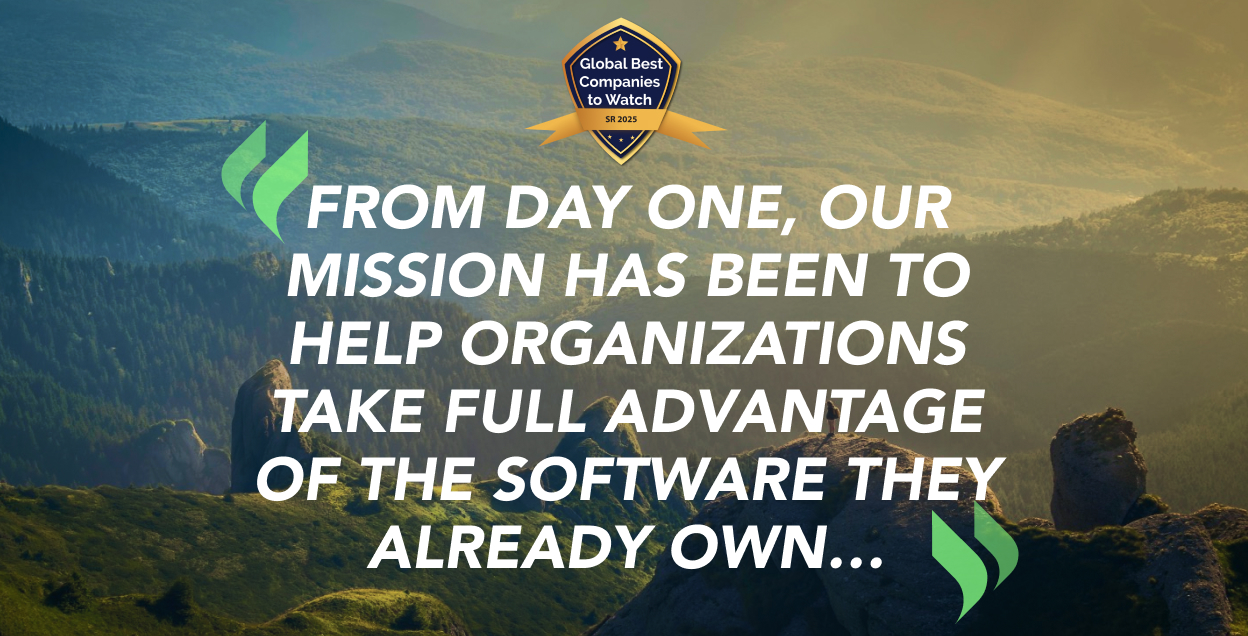Summary

Engineering Results: How Cyberhill Turns Software Into Strategy
In today’s rapidly evolving digital landscape, enterprises push toward the edge—yet a quiet crisis looms: the widespread underutilization of enterprise software. According to Cyberhill Partners, an estimated 70 percent of enterprise software features are never used. To make matters worse, 40 percent of the licenses companies purchase are never activated. This isn’t just a technology oversight—it’s a strategic failure.
Cyberhill Partners set out to change that. The firm is dedicated to helping organizations maximize ROI from their technology investments. With over 800 cybersecurity implementations and a client base that includes Fortune 1000 companies and major government agencies, Cyberhill has become known for solving problems, not selling tools. Cyberhill’s mission is clear: to design secure, scalable, and smart solutions that drive real-world impact. In their view, it’s not about the software you buy. It’s about the solution you deliver.
In conversation with Rob Buller, CEO of Cyberhill Partners–
What was the motivation behind starting Cyberhill Partners?
The challenge was obvious. Most enterprise software goes unused or underused. Organizations waste money on licenses that never get activated and tools that sit idle. We recognized a clear opportunity to raise the standard. From day one, our mission has been to help organizations take full advantage of the software they already own, and to implement new solutions that are effective from the start. That’s why we focus on three core principles: scalable systems using the cloud, smart tools that leverage AI, and secure environments that protect the entire stack. We created Cyberhill to bridge that gap. Our aim is to build systems that are not only technically sound but also drive real business outcomes.
Can you explain your services in brief?
We work as a unified delivery team. That includes architects, engineers, and project managers, all aligned around clear deliverables. We don’t operate as disconnected consultants. Our approach is collaborative and execution-focused.
We also work on a fixed-fee, outcome-based model. Clients aren’t paying for hours. They’re paying for results. That structure keeps everyone aligned and ensures we stay accountable from start to finish.
What makes Cyberhill different in such a competitive space?
It comes down to our delivery model, our people, and our commitment to results. With over 800 cybersecurity deployments under our belt, we’ve built deep expertise. But what really sets us apart is how we engage with our clients. We deploy cross-functional teams, not lone consultants. We prioritize transparency and operate under fixed-fee contracts. That means our success is tied directly to delivering real outcomes. And we don’t sell software for the sake of it. We implement what works and stay until it delivers.
How do you ensure security and compliance at scale?
Many of our clients operate in highly regulated environments, including defense, healthcare, and financial services. Security and compliance are absolutely essential.
We never directly access our clients’ systems. All work is conducted via secure Zoom sessions, which provide real-time guidance while maintaining a zero-touch approach. These sessions are recorded, reviewed, and documented. We also deliver weekly status updates and monthly executive briefings. Everything is archived in secure, encrypted environments. This level of structure provides the oversight and transparency our clients need.
How does Cyberhill integrate AI, data analytics, cloud, and traditional IT?
We see all of these elements as part of a unified system. For instance, we recently worked with a government agency that needed to test an AI-based analytics tool. Within 24 hours, we had deployed a secure DevOps environment using Terraform, spun up the environment, deployed the solution, and then tore it down—all without compromising compliance.
That’s the kind of agility enterprises need. We don’t treat AI, cloud, or cybersecurity as separate silos. They’re integrated. And that’s how we build our solutions.
What’s your approach to solving complex client challenges?
We take a methodical, iterative approach. Our philosophy is simple: measure twice, cut once. That means starting with a deep understanding of both the current environment and the desired future state. We conduct thorough gap analyses, build detailed architectural roadmaps, and work closely with client teams to design sustainable, secure implementations. Importantly, we don’t stop at installation. We continue through integration, testing, and operational maturity. We aim for long-term success, not short-term fixes.
How do you define success for your clients?
Success is not just about technical implementation. It’s about delivering lasting value. We aim to be trusted partners throughout the entire lifecycle of the client’s technology journey. We also invest in our technology partners. We help them go to market, mature their products, and build better integrations. That ecosystem mindset helps us bring the best possible solutions to our clients.
We only work with partners who are responsive, innovative, and collaborative. And we tailor every engagement to the client’s environment. No cookie-cutter solutions.
Why is knowledge-sharing such an important part of your model?
Technology evolves quickly. AI is already changing how enterprises operate. Quantum computing is right around the corner. We believe that knowledge-sharing is critical for helping clients stay ahead.
We produce white papers, host webinars, and maintain private knowledge portals. These resources are deeply practical—rooted in the lessons of real-world enterprise engagements. They help our clients make informed decisions, not just follow trends.
What does the future look like for Cyberhill and your clients?
We’re very optimistic. AI is already beginning to replace legacy software in some use cases. That trend will only accelerate. Enterprises will rely more on intelligent systems that automate routine tasks and adapt to new challenges. We’re also keeping an eye on quantum computing. It’s not here yet, but we believe it will eventually reshape how we think about encryption, data processing, and even cloud architecture.
We’re committed to staying ahead of those changes, so our clients don’t fall behind.
How would you describe your leadership style and company culture?
It all comes down to teamwork. No single person can deliver a complex enterprise solution alone. Our success depends on collaboration within our team, with our partners, and with our clients. As leaders, we believe in setting a clear mission and enabling our teams to execute. We support each other, communicate clearly, and focus on solving real problems. That culture is our anchor—and the foundation of our effectiveness.
Tell us more about your partnership strategy. You mentioned data.world as an example.
Strategic partnerships are built on relationships, not just technology. Of course, we vet every partner for technical excellence. But more importantly, we look for shared values.
We use data.world internally and recommend it when appropriate. But we never force a specific tool on a client. If they’re using something else that works, we integrate with that. We’re proudly technology-agnostic—always guided by what best serves the client’s strategic objectives.
What are some key trends shaping cybersecurity and cloud today?
AI is the most important trend right now. Cloud infrastructure is already mature. Cybersecurity solutions are also widely available. But AI is still emerging as a core enterprise capability. We’re exploring how AI can help detect anomalies, automate security responses, and improve cloud efficiency. Our lab is constantly testing new use cases so that we can bring proven solutions to our clients.
What are your priorities for the next five years?
Our top priority will always be our clients. That means continuing to invest in new technologies, expanding our partner ecosystem, and growing our team. We want to deepen our AI capabilities, continue building proprietary tools in our lab, and expand into new sectors where our expertise can add value. We’re particularly interested in the intersection of AI, cybersecurity, and cloud—and we believe that’s where the next wave of enterprise innovation will happen.
Looking back, what values have guided your journey?
Collaboration, humility, and clarity of purpose. Cyberhill wasn’t built overnight, and it wasn’t built alone. It took a network of smart, committed people working toward a common goal. We believe in empowering teams, being transparent with our clients, and staying focused on outcomes. That’s how we’ve earned trust, delivered results, and how we’ll continue to lead.
As enterprise environments grow more complex, Cyberhill Partners stands out for its clarity and discipline. By focusing on scalable, smart, and secure solutions, the company continues to lead clients through real transformation—solving one problem and delivering one outcome at a time.
Meet the leader behind the success of Cyberhill Partners
Rob Buller is a seasoned entrepreneur and executive with a track record of pioneering innovation across multiple industries. Currently the Managing Partner of Cyberhill Partners, Rob brings over three decades of leadership experience in technology, e-commerce, and cybersecurity.
In his 20s, Rob launched one of the first online grocery shopping platforms, which evolved into Harris Teeter Express Lanes, helping to pioneer the now-commonplace “order online, pick up in store” model. In his 30s, he co-founded a virtual assistant technology that predated mainstream AI voice solutions like Siri and Alexa, now integrated into Regus, a global flexible workspace provider.
In his 40s, Rob founded Cyberhill Partners, a cybersecurity venture, and Pahu, an AI-driven identity platform currently awaiting patent approval. Rob also served as COO of a publicly traded technology firm in California, where he successfully led the company through a strategic acquisition. Early in his career, Rob became one of the youngest partners at KPMG, where he led the firm’s national Consumer & Industrial Markets e-commerce practice.
With a foundation as an analyst on Wall Street and deep expertise in scaling ventures, Rob continues to drive innovation at the intersection of technology and business strategy.
“Success is not just about technical implementation. It’s about delivering lasting value. We aim to be trusted partners throughout the entire lifecycle of the client’s technology journey.”

Forbes Feature: The Untapped Power Of Unstructured Data In Enterprise AI

The AI Readiness Gap: Why Most Organizations Aren’t Prepared to Scale AI
